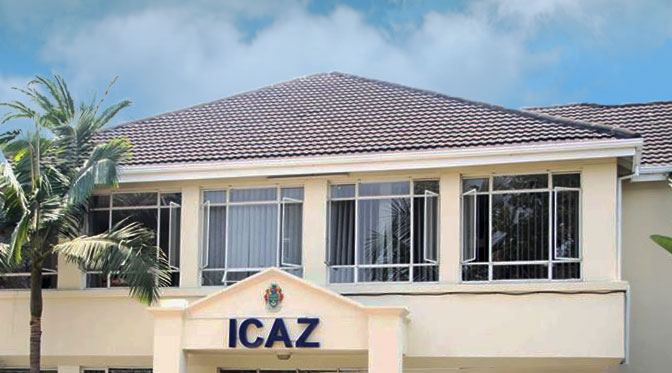Falling auction rate makes bidding tricky
THE fall in the auction rate by 6.17 percent since the end of September, with more than half that decline seen last week, presents a new set of circumstances to businesses and will make bidding on the auction less predictable, at least for a while.
The auction system as used by the Reserve Bank of Zimbabwe has never been a perfect auction. The top bid is regulated by the market, the conscious decision of bidders not to go too high since the rule that what you bid is what you pay is enforced.
The bottom bid that ensures allot- ment has always been set, in effect, by the Reserve Bank. In a pure auction the amount available would be set and the bids would be allotted in order from the top until the amount ran out.
This could produce a great deal of instability and, in any case, would not meet the fundamental need in an system that allocates foreign currency. There are a certain amount of imports that the economy needs to function fully. These have been set on the priority lists put out by the Reserve Bank and as the auction bidders can only bid to pay invoices for
listed goods, there is not much room to exclude bidders.
On the other hand the auction sys- tem does not include all the foreign currency. If it was to operate as a largely unmodified auction all export earnings would have to be available on the auc- tion, rather than just 40 percent, and exporters needing imports would have to bid to buy back some of the money they earned. With the rough alignment between exports and imports Zimba- bwe enjoys this would work fairly well, especially if the Reserve Banks or even the banking system could act as a res- ervoir when exports surge seasonally and release the money in a regular flow.
In these circumstances, and remem- ber the priority lists would probably go as well, the exchange rate would follow the current account, rising when exports surge ahead of imports and falling when imports move into the top slot. As this stage we would, in fact, have a trade-re- lated float of the local currency and the Reserve Bank would be largely
concen- trating on managing the money supply.
We are some way from that happy state of affairs.
So at the moment the Reserve Bank modifies the auction in two major ways. It limits what imports can be bought with auction dollars, and it helps set the rate by imposing a lower limit on otherwise acceptable bids that can get allotments.
For most of this year the Reserve Bank has been allotting to everyone who bid at $85 or above. This ensured a high level of stability in the exchange rate and bidding was generally in a very tight band as a result. The local currency was drifting, very slowly, down as most bidders realised that the rate could not be preserved forever.
Last week the Reserve Bank shifted. The bottom bid that received an allot- ment was $88,50, roughly the weighted average for the previous week. A fair block of bids, although less than a quar- ter in value terms, were not allotted. This week the process continued, with the minimum bid accepted for allotment rising to $90, the weighted average for last
week, but the message had reached most bidders and most had bid at or above last week’s average, so few were rejected.
Analysts have been pouring over the results. One group has suggested that the main idea is to give far higher pri- ority to matching bids with the available currency. This would end the delays we have seen in paying out on allotments and, at first sight, appears attractive. But it can only work once, as it did last week. Because of the auction system limits bidders to importers of essential imports, these have to be imported. If the auction included a lot
of luxuries or other inessential imports then imports could be cut.
But the point is that there is little fat on the auction bids. We saw that this week when bids returned to full vigour and people just paid more to get what they simply had to have.
A second, more subtle analysis, looks at what should a normal exchange rate be. In other words what is a US dollar worth in Zimbabwe dollars. Some immediately jump in and say the black market gives that rate, but forget the huge margin between what forex sell- ers get and what forex buyers have to pay, and miss all the manipulation that can
take place in a relatively small and unregulated market.
As we have argued before, the black market rate will always be higher until we reach a stage where not only non-es- sential imports can be funded from banks and auctions but capital payments are no longer controlled and even drug dealers can buy from banks.
Generally when an economist is look- ing at real values the purchasing power parity is found a useful concept. This involves quite a lot of difficulty in prac- tice to equate like to like, but would tend to produce an exchange rate by com- paring how many local dollars would you need to buy say US$100 of similar goods and services. The critical word is
similar, so local production is fed into the equation and you are not just dealing with identical products.
At the start of the auctions there was a general feeling that the auction rate overvalued the US dollar. That is US dollars were more expensive than they should be. But that objection was over- ruled and the rate was allowed to con- tinue, with the local currency first being very stable indeed, with slight rises and falls, but then slowly depreciating.
Depreciating is expected because of the gaps in inflation rates. While Zimba- bwe’s inflation rate collapsed, seen in the monthly rates from September last year, that monthly rate was still higher than the US monthly rate. If Zimbabwe had a monthly rate of 3 percent one month, and the US had 0,5 percent, a perfect sys- tem with no other factors would see
the local currency devalue by 2,5 percent.
While the rate has been depreciating since we reached a level where most people accepted that the Zimbabwe dollar had found its correct value, that rate of depreciation has not been as fast as the gap in inflation rates. So one would expect stresses to build up. So it can be said that raising the lower limit for bids to be allotted is a move to get the exchange rate back towhere the true value is set.
This analysis seems to be backed by the Reserve Bank efforts to seriously decouple the auction rate and the black market rate by going after black market dealers and, in conjunction with the police, going after people who set retail exchange rates at black market levels. That has already produced a stability in the black market. It saw rates
change fast and then suddenly settle.
So the position at the moment is that it is the auction rate that is moving, not the black market rate. But no one really knows where the auction rate will end up. Which makes lives hard for bidders.
This week we saw most bidders guess, correctly, that if they bid above last week’s average they would win. Some did not want to take risks and went up to 16 percent higher, at least on small bid, and around 13 percent higher on bigger bids. They overdid it. But the bid band did widen quite a bit, accelerating the depreciation that was already in place with the rising minimum allotted bid.
So importers are in interesting times.
The change in the exchange rate is unlikely to have much effect on demand for auction currency but could make net exporters more willing to enter the interbank market to increase supply for these sort of essential imports.
And here we reach the critical issue. While Zimbabwe’s outflows of foreign currency are below its inflows, a sub- stantial percentage of those inflows, the retained export earnings and the dias- pora payments, are not in the system. So we see that US$1,8 billion and rising sitting in nostro accounts.
If we want more cash for imports then either the retention rates need to be lowered or exporters need to start selling more of their retained earnings, either voluntarily through the interbank market or because the Reserve Bank alters its policy to remove its fairly recent concession that they can keep retained forex forever and makes them use or sell
within asetperiod.-eBusiness Weekly










